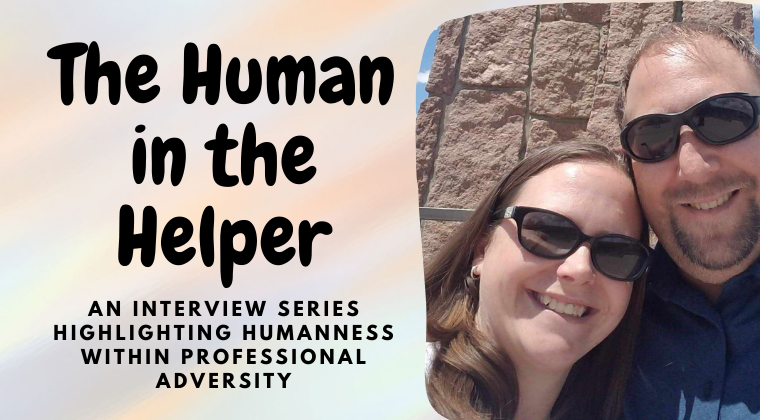Caitlin loves her job and it shows. She works with youth involved in the juvenile justice system and has loved that system for over 15 years. It’s a career choice not many colleagues would commit to, especially when working with a population that assumes greater risks of loss, compassion fatigue, and vicarious trauma. Even though she finds her work rewarding, Caitlin has also experienced every Adverse Psychological Event (APE) known within our field, including the not often talked about ones, like client violence directed towards others. “I had two clients murder people in the community.”
Caitlin is willing to share her story to help others while also acknowledging how difficult it can be. “I had four deaths in an 18 month span,” she recalls. For her two clients who killed people, these tragedies happened after they had closed out of services. “The support I received around this happening was different because they weren’t active clients.” Caitlin reflected on how the support was minimal in supervision and consultation because of the clients not being active on her caseload. She named how it felt like leadership was relieved to not have to staff these cases, and redirected her to focus on her current caseload of at-risk kids. She heard messages like, ‘It sucks that that happened. What are you doing for your current suicidal kids?’
Although Caitlin understood the focus of leadership on current clients, this messaging didn’t help her healing process as a person. She found herself questioning if she’d done enough for her clients. If there was something she missed. And then there was the grief. “I was surprised that I felt so much grief for the kids who engaged in violence. I thought things must have been pretty bad for them to do this.” Caitlin’s compassion confused colleagues, who did not hold compassion for her former clients at all, instead labeling them murderers and engaging in black and white thinking. “They are still traumatized kids,” Caitlin named.
A trauma lens helps Caitlin remain in this work with her clients, as well as her abundant compassion for what her clients have been through. Even so, the losses still took a toll on her. She felt acute symptoms of grief in the first month, with flare ups anytime she saw her former clients in the news for their trials or sentencing. She had recurring nightmares with her clients in them. “They were always calling out for help. Someone had to help them.” What helped Caitlin most was having one colleague who understood what she was going through, because they worked with the same population. “One time I came into her office and cried,” Caitlin shared. “My mentor said, ‘Caitlin, you are working with people through some of the darkest moments of their lives. That doesn’t always mean they come out of the darkness by following your light.’”
Caitlin reflects on the importance of having a colleague or mentor who can hold this heaviness with us. Someone who aligns with our beliefs and gives us space to heal. Someone who supports the ugly cries and the dark humor. Someone who reinforces we aren’t alone. She also encourages colleagues to do their own psychological first aid, making sure to eat, sleep, and move their bodies. “You will want to freeze. Honor all your feelings. You will experience every stage of grief.” Caitlin doesn’t have any plans to pivot from this population because she operates from a belief that what we do as mental health professionals still matters. “For every horrible thing that happens, there are 10-20 that don’t end up that way. Those horrible things are still the minority.” Caitlin’s story provides a beacon of hope in light of something that feels so heavy and so powerless. We feel honored to be able to share her messages here.
Things happen to us as humans, even as we support our clients as professional helpers. Do you have a story you want to share the mental health community? Email us at croswaitecounselingpllc@gmail.com to learn more about the Human in the Helper Series!


